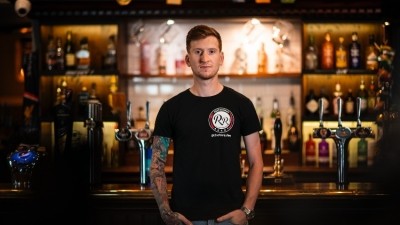Seated audiences, no singing: what are the rules for live music?

The decision was delayed at the start of the month after a slight increase in coronavirus infections were recorded.
However the Government has announced theatre and music performances will be allowed once more, with guidance issued from the Department for Digital, Culture, Media and Sport (DCMS)
The Music Venue Trust (MVT) has already said it will not be feasible for grassroots music venues to reopen until social distancing guidelines are eased as the reduced capacity means many would not even break-even hosting gigs.
The guidance outlines how music venues should think about risk, decide which staff should take part, manage performances, protect performers, clean objects and equipment, and use PPE.
Reduced capacity
Measures included in the guidance involve reduced venue capacity and limited ticket sales, with e-tickets encouraged to reduce contact and aid NHS Test & Trace.
Social distancing between all the different households involved should be adhered to, with clear markings in place and a limited entry approach. There should be no heavy queues.
It states: “Maximum capacity should consider appropriate social distancing given the nature of activities (i.e. if the activity is static v requiring a range of movement) and equipment layout and the configuration of space.”
There should be increased deep cleaning of performance spaces and auditoriums, with any multiple performances scheduled to allow cleaning in between audiences.
Reconfigure spaces
Operators are also asked to consider “the ventilation rates that can be applied to the premises or venue and whether this can be adjusted sufficiently to deliver a safe environment for all those due to attend at any time (performers, producers, support teams and audience combine.”
The guidance also states spaces should be reconfigured so audiences are seated rather than standing. It suggests considering using booths, barriers or screens between performers and any audience.
It adds: “Due to the risk of transmission via droplets, venues with balconies should keep the front 2m of seats empty to mitigate risks of transmission.”
Operators should discourage or avoid gatherings that “may encourage audience behaviours that increase transmission risk, for example crowding, clustering or physical contact outside of household groups or support bubbles.”
No singing
This includes ensuring audiences do not need to “unduly raise their voices to each other” and “discouraging singing along to music or cheering, refraining from playing music or broadcasts that may encourage shouting, including if played at a volume that makes normal conversation difficult, for example during performance intervals".
They must also consider pinch points where crowds could form, “such as at points of ingress and egress, car parking, handwashing and toilet facilities, waiting areas, bars and restaurants and areas in proximity to performance area.”
The guidance states front of house and back of house zones should be created with people operating exclusively within each zone, where possible. Any roles that interact with audiences should be identified and transmission risk managed appropriately.
Considerations for performers and other staff include ensuring socially distanced changing areas and rehearsing or training outside where possible.
Performers should social distance and use back-to-back or side-to-side positioning (rather than face-to-face) whenever possible.
The extensive guidance can be read in full here.
- A version of this story suggested the unlocking of indoor performances only related to venues with a primary function of hosting performances however this has been removed. Pubs were permitted to host socially-distanced indoor performances from 15 August.







